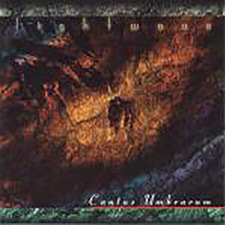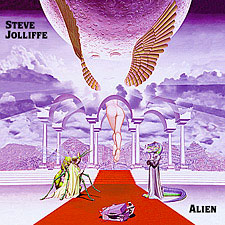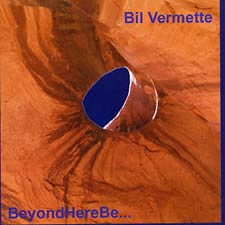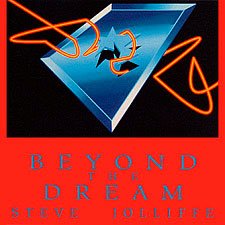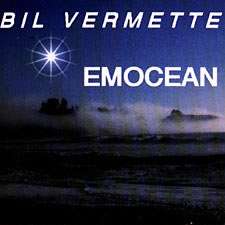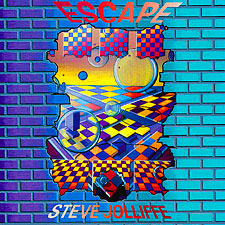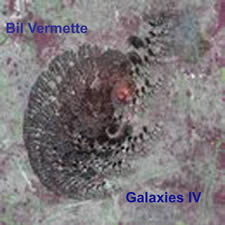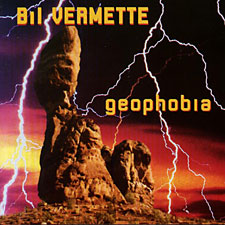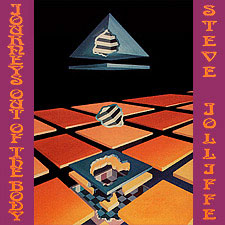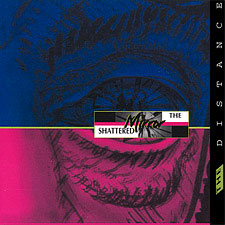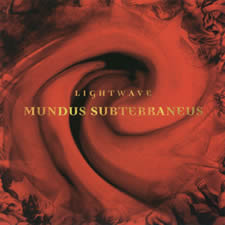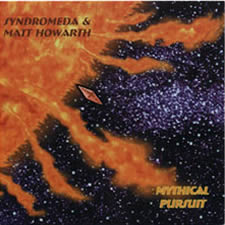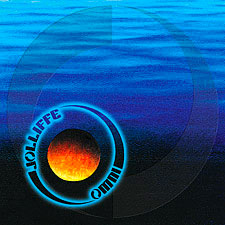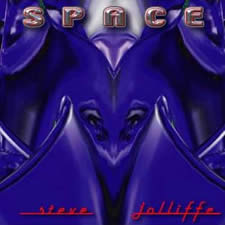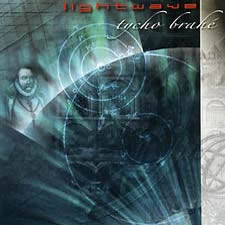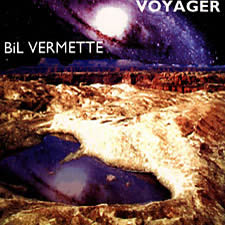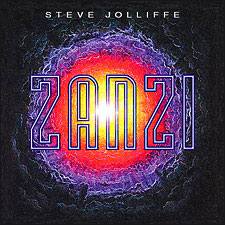For us, live performances were always the ideal place and time for free and intense musical creation.
Most of the time, our concerts have been conceived and prepared for specific places and surroundings, particular audiences and circumstances. We do not have a fixed repertoire of compositions which could be played live in any location, but rather a palette of sonic colors and musical concepts, and a specific technique for performing electronic music on stage. In our concerts we are able to play a new and different music each time. Improvising and reacting with the location and the audience are the key points of our concerts.
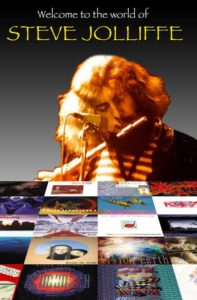 Steve Jolliffe to perform in London on March 9
Steve Jolliffe to perform in London on March 9
Steve Jolliffe, who has released several albums on the Horizon Music label, will give a concert at Nightclub Kolis in London, England on Friday, March 9 at 7 PM UTC (Universal Time). He has had two stints in the German electronic rock group Tangerine Dream, the second one being in 1978, during which time the band released an album called Cyclone. To commemorate the 40th anniversary of that record, Steve will perform it in its entirety at this show, with some additions. The gig will also see a release of a CD called The New Cyclone. The disc will be free to the first 20 attendees.
For further information and updates closer to the event, please see www.facebook.com/events/559783544374596.
Past Concerts
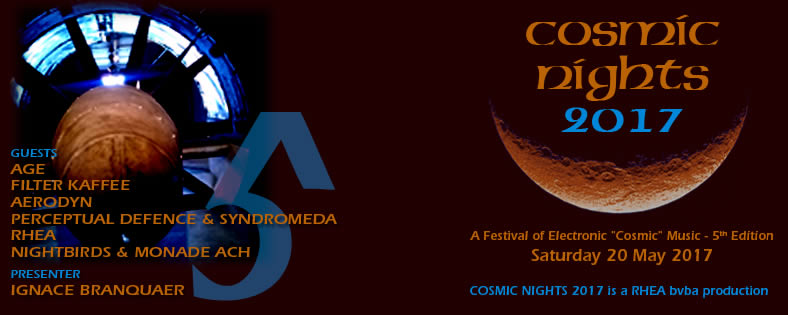
On Saturday, May 20, 2017, Syndromeda, who in 2008 released a CD called "Mythical Pursuit" on the Horizon label, will be one of several acts performing at Cosmic Nights 2017. The event will take place at:
DeLuchtfabriek
ZLDRluchtfabriek
Marktplein 5
3550 Heusden-Zolder
The venue itself is described as "an amazing ancient industrial location where the ghosts of the ancient workforce are still present..."
For more information including ordering tickets and prices, please see www.b-wave.be.
The town of Heusden-Zolder is located in northeastern Belgium, 77 kilometers (48 miles) from Brussels. It is also 68 km (42 miles) from the Belgian city of Antwerp, 50 km (31 miles) from the Dutch city of Maastricht, and 69 km (43 miles) from the Dutch city of Eindhoven. www.belgianrail.be contains information regarding how to get to Heusden-Zolder by train and bus.
"Ich Phoenix" was an International Art festival organized in the Oberhausen Gasometer, one of the largest industrial Gasometers in Europe, which is now a Cultural Center. French artists Anne and Patrick Poirier were commissionned for an interactive installation on the floor level of the Gasometer. Anne and Patrick asked Lightwave to conceive the original soundscape and musical events of this interactive installation as well as the technical set up and the PA system. All the technical set up and the electronic engineering were conceived by Michel Geiss, and were built inside the Gasometer by Patrick Pelamourgue, Jean-Michel Jarre's main studio technician. A special CD "In der Unterwelt" was released with some samples of Lightwave's music that evolved and changed during 6 months, according to the interaction with the thousand of visitors. Lightwave was invited to play a live concert in the upper part of the Gasometer (with a 90 meter high roof). In this unique industrial place, with incredible acoustic properties (echoes, reverberation), Lightwave gave a world première of its work in progress, the Lowell opera. With a multichannel sound system, Lightwave played with the American opera singer Susan Belling (S'Ange). The result was an electronic space opera devoted to the American astronomer Percival Lowell who discovered the canals on Mars. Lightwave is still working on this project for a future CD release.
Line up: Christoph Harbonnier, Christian Wittman, Jacques Derégnaucourt (electronics, violin), Renaud Pion (flutes, saxophone, turkish clarinet, bass clarinet, Ewi, electronics).
Lightwave was commissioned by the festival to conceive a special sound installation in the Choranche subterranean caves, in the Vercors mountain: a multichannel PA system was built up in galleries (600 meters long) and two huge subterraneans spaces with lakes, rivers, waterfalls, etc. The audience was guided by spelunkers along the itinerary, and thanks to a special technical set-up, the recorded music was following the walkers, from one loudspeaker to the next. At the end of the odyssey, in the subterranean space of the great lake, Lightwave played a live concert for every group of visitors. Natural ambient noises (echoes, water sounds) mixed together with Lightwave electronic music. Renaud Pion and Jacques Derégnaucourt added their own acoustic contributions to the electronic soundscapes. One day, because of heavy rains on the Vercors mountains, there was a flood within the caves and the subterranean rivers and lakes went mad during a Lightwave concert. The concert had to be stopped, in an emergency situation, to allow the audience to escape from the cave. Lightwave, with the technical crew and the spelunkers, had to dismantle the entire PA system and lighting set up, as well as the whole stage, in less than an hour and placed all the equipment in a safe place, on a rocky platform above the water. The following day, the entire set up was built again for the last concert. The sound installation's soundtrack as well as one of the 15 concerts was released by Horizon Music under the title of "Cantus Umbrarum".
The "Tycho Brahé" album was just released. The leading French electro-acoustic composer Michel Redolfi, artistic director of the Manca festival, invited Lightwave to play two concerts in the Astronomical Observatory conceived and built up by Garnier and Eiffel at the end of the Fourteenth century. Among the other composers involved in this Festival edition were Morton Subotnick, Philip Glass and Redolfi himself. The two Lightwave concerts were quite different. The first one strictly followed what we planned in Paris. During the second one, a minor technical problem lead us to break free of the entire planned structure and to improvise from most of the music from scratch.
This second concert was recorded and released under the title of "Uranography".
We played this concert as the main act of the festival. We worked with Paul for a few days in Paris, and we agreed on the general aesthetics of the show, mixing percussive lines and abstraction.
This was a concert without compromises, without melodies: experimentation, electro-acoustic and ambient atmospheres. As usual, UK reviewers supported us.
This was really a crazy project (but we are French, right?). Our friend Hector Zazou had just completed the recording of "Sahara Blues", an album produced by Sony / Columbia and featuring major international artists. Lightwave contributed to the electronic sound design and we were even credited as composers of a piece with David Sylvian and Zazou. "Sahara Blues" was devoted to the French poet Arthur Rimbaud, and 1991
was precisely the celebration of his death. A very important Festival was organized in Paris during 24 hours, with many musicians and dance companies involved. Zazou was commissionned for a special 24-hour concert, and he asked us to join him. So we played from noon to noon, with breaks to drink and eat. But we did not sleep at all, nor did the audience. We played in a comfortable auditorium, where deckchairs had been brought for the listeners. We played during a whole night, when people were half-awake and half-asleep as well. It was a really hypnotical, chill-out, ambient atmosphere. Zazou's and Lightwave's electronic soundscapes were mixed to the trumpet's lines of Christian Lechevretel, to the saxophones and flutes lines of Renaud Pion and to the guitar of Kent Condon. Very early in the morning, a singer joined us on
stage during a very ambient and minimalist set. We were so focused on the music that nobody even realized right away that someone was singing with us. This was a magic event...
All the music, during these 24 hours, was improvised. There exists a full recording of these concerts. Unfortunately, we do not have it.
Lightwave was invited as the main act of the Electronic music festival organized by the students of the Telecom High School in Paris. By that time, there was a new guy involved in Lightwave. Explaining why Paul joined us would be too long. Actually, we are not even sure to remember how it happened. But it happened. Let's say it was the result of an improbable friendship, of a meeting in Paris a few years before, of some weird French culinary traditions, and of chance. Paul spent a few days with us in our studio and we worked together for preparing this concert. He programmed some great rythmical patterns and sequences, and we added the usual French touch of craziness. The result was probably one of the most structured concerts we ever played and we had a lot of fun together. Various bootlegs of this concert are still in circulation. Oh yes.... for the "encore", French electronic artists François Elie Roulin and Jean-Philippe Rykiel joined us on stage.
Well, a lot of things had happened since our last concert. During one magic night, Christoph and Christian recorded "Nachtmusik." Bruno left the band and chose a solo career. And Lightwave started a collaboration, as electronic sound designers, with French composer Hector Zazou and his team of musicians. We were invited by the "Art 3000" organization (devoted to art and new technologies) to give a concert at their annual meeting. We conceived a special set with Kent Condon, a great guitarist working with Zazou. The music was rather percussive and sequenced, with atmospheric parts. Kent's floating electric guitars added a psychedelic touch to the show. Unfortunately, someone forgot to push the "record" button on our DAT machine, so we have no recording of this concert...
Lightwave was invited for a special show-case concert by a reputed record-store in Paris, specialized in new musics, electro-acoustic, industrial, experimental musics. French electronic artist Jean-Philippe
Rykiel (sound programmer and collaborator of Vangelis, Eno, Tim Blake etc.) joined us on stage.
In the gorgeous surrounding of French Alps mountains, we were part of the first (and last) France Electronica. Organized by our friend Pascal Menetrey, this Festival featured among others Wavestar, Tim Blake and Bernd Kistenmacher. Lightwave was still using modular synthesizers on stage, but there were also some digital samplers in the set up and Atari computers as well.
For several months Lightwave worked as a duo, composed of Christoph and Christian, which still remains the central nucleus of the band. We worked on our first concept cassette-album: "Cités analogues". We experimented with new methods of composition, involving tapes manipulation, ambient field-recordings. Our new concert in the "Ici & Maintenant" studio was a very special event. During the afternoon, we played a live "première" version of "Cités Analogues." During a heavy promotional campaign, the audience of the FM radio was invited to gather on the Piazza of the Centre Georges Pompidou, and to bring with them FM radio receivers in order to create the surface PA system of the concert. Around 2,000 people came with their radios -- there were big and small loudspeakers, mono and stereo, with various sonic colors, and various balance of bass and treble. When we started to play in the radio studio, a huge sound was heard on the Centre Pompidou piazza, with one of the craziest multichannel PA systems ever conceived for a live electronic performance. The audience was surrounding the Popdreams dancers with their slow motion show. At the end of the concert, we programmed a random ambient atmosphere, with echoes, and sample- and-hold sounds generated by our Modular synthesizers, and we went out of the studio, very close to the Centre Pompidou, to have a look at what was happening. The Piazza was very crowded, and thousand of listeners
were surrounded by our electronic sounds, coming from the small loudpseakers of the radios receivers, in a surrealist atmosphere.
During the evening, we started a new whole night concert live in the FM radio studio. The music was mostly improvised. Bruno Heuzé joined us as a guest musician. After this concert, he joined the band as a full time member. Parts of the music were released in a cassette production, "Ici Maintenant" .
Another concert in the Cultural Center near Paris. We conceived a whole show with the dancers of Popdreams, and we worked together for several days before the show. It was a surrealistic and poetic evening, with lunar mimes moving all around us while we were playing. After the concert, Serge informed us about his decision to leave Lightwave for personal reasons.
Our friend Mark Jenkins invited us to play at the Logan Hall in London with leading European electro-musicians, such as Steve Jolliffe and Ian Boddy. It was our first performance outside France, and we
moved our entire Paris studio with all its modular synthesizers. Building up our set-up in the pretty hectic atmosphere of a festival stage, in three or four hours, was not an easy task. Despite a very short sound-check, necessitated by the tight time schedule, and despite technical problems during the first minutes of the show, we played a typical Lightwave set, with sequences and abstract climates, enhanced by a laser show.
The Auditorium des Halles is a famous classical music concert hall in central Paris. With Lightwave's concert, electronic music entered this prestigious venue for the first time. This unique concert was sequence-oriented: most of the sequences were programmed and controlled live by Serge with all his Modular equipment, his analog equipment and also the MDB Polysequencer (one of the first digital sequencers), which had been used extensively by Jean-Michel Jarre during his concerts in China. This concert was a step toward our concept of an electronic chamber music ensemble, and some of our pieces had a classical color. The dancers of Popdreams, specialized in slow-motion dance, added a surrealistic touch to the performance, moving across the stage as astronauts walking on the moon. The audience's reaction was very positive.
"Ici & Maintenant" ("Here and Now !") was one of most famous alternative underground "free" radio FM in the Paris area. New musics, Zen Buddhism, alternative politics, culture and interactivity were the radio's trademark. Bruno Heuzé, journalist and one of the musical programmators of "Ici & Maintenant," invited us to play a live concert during a whole night in the studio of the radio. We moved all our equipment (modular synthesizers, Polymoog, PA system, etc.) into the small underground studio. After a whole day of soundcheck and technical rehearsals, we started playing at 10 PM for hundreds of thousands of people listening to their radios at home. Soft blue light, candles and, as far as we remember, various drinks: we felt in ideal surroundings, and we played and improvised music until 6 AM.
During the breaks, listeners were calling the FM station and we had a live dialogue with them. Most of them evoked the images, the feelings provoked by the music, and we had some in depth-discussion about music, electronics and creation. The technical set-up was perfect, the sound was flawless, the balance and the live mixing were excellent: today it still remains a fantastic experience for us. Bruno Heuzé will join Lightwave a bit later. All the concert was recorded on a Revox tape machine.
Christoph was the guy who listened at the tape of the Chatenay concert and said "I like it !". So we invited him to join us for our second concert, which was one of the headlines of a Contemporary art festival, among exhibitions and various lectures by artists and critics. This Lightwave concert was pretty long (three or four hours ?), with a lot of sequences, abstract parts, floating and atmospheric pieces as well. We had a special visual set up with beautiful and abstracts shapes and colors projected on a large screen. Christoph became a permanent member of the band.
A lot of preparation went into the performance, with a complex backing tape mixed in a professional studio. Instruments were only old analogic modular systems (VCS 3, Roland System 700, Arp 2600). Laurent's VCS 3 went out of control after a few minutes, and Serge and Christian had to continually increase the output level of their mixing desks to hear what they were playing. As a result, the whole performance was a sonic maelstrom, somewhere between industrial-trash-post apocalyptic music, hard rock, noise, undelicate chamber music, amplified hooter and permanent foghorn. French electronic veterans Yvan Coaquette and Annanka Raghel (Musica Electronica Viva, Fondation, Spacecraft) attending the performance told us that they enjoyed it a lot, because it reminded them the very first days of Musica Electronica Viva, when they played concerts using only large metallic oil-cans with hammers and microphones, various processing devices and a huge PA system. Our concert was played in the dark and was probably a bit traumatic for the listeners and eventually for the players themselves. At the end of the concert, the audience kept totally silent for three minutes.

